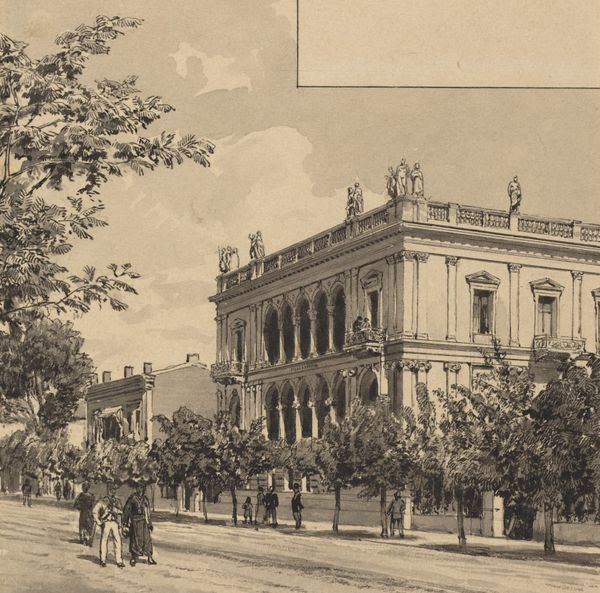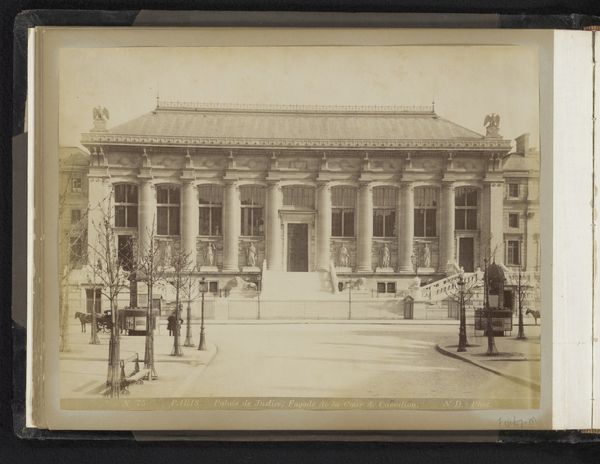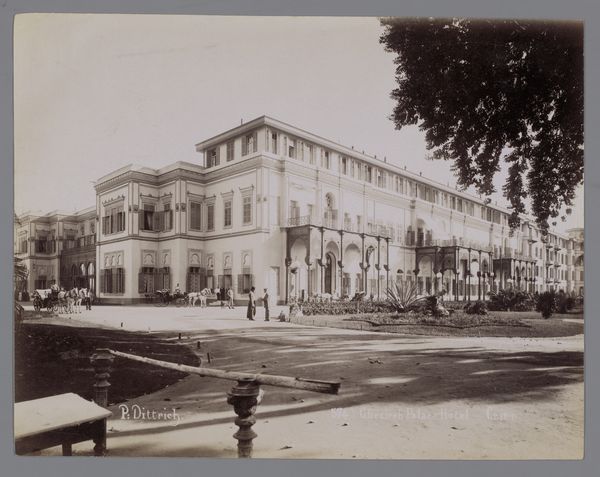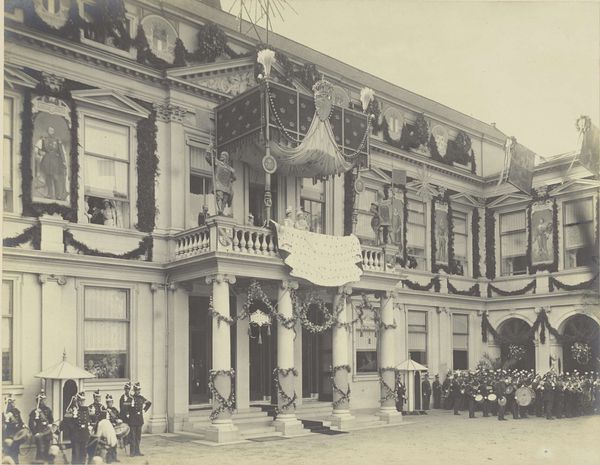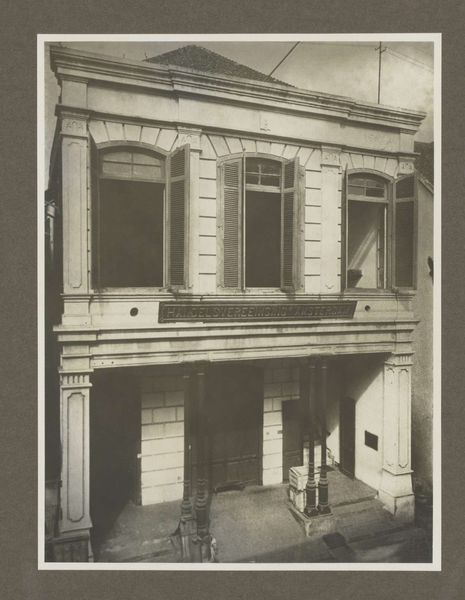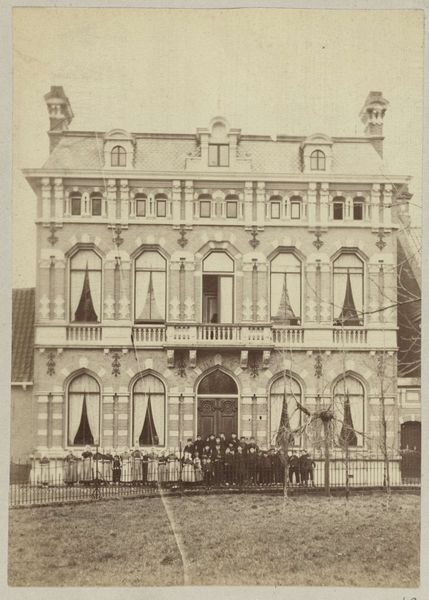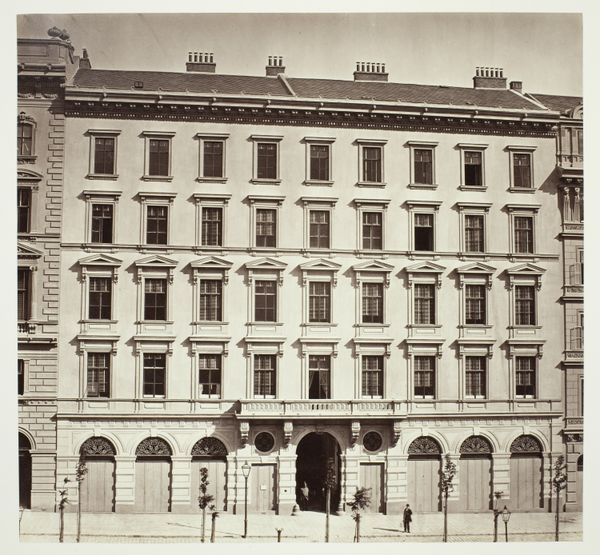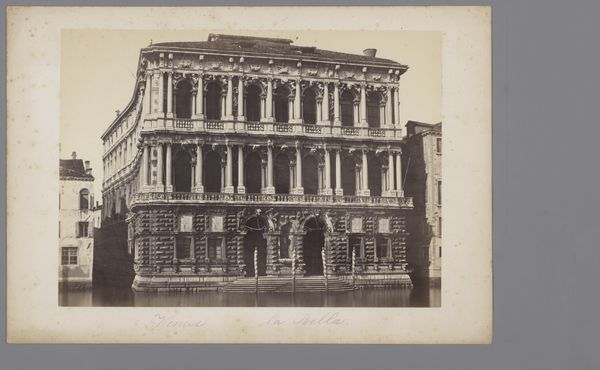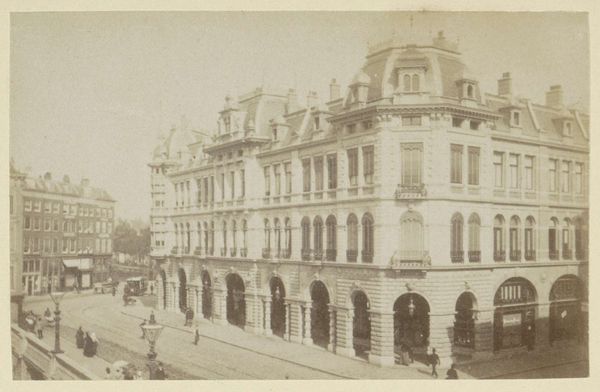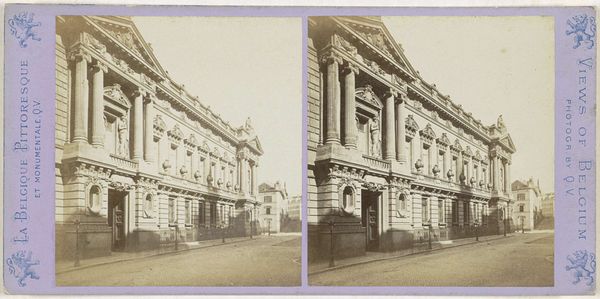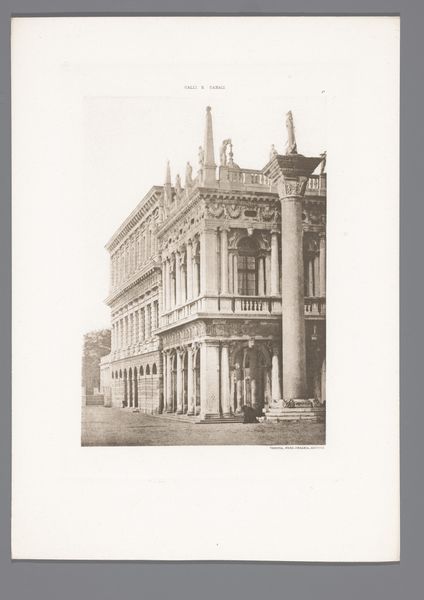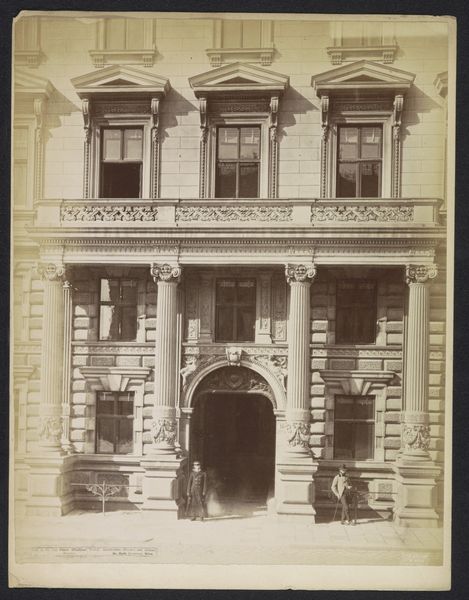
photography, architecture
#
black and white photography
#
historic architecture
#
street-photography
#
photography
#
historical photography
#
monochrome photography
#
cityscape
#
architecture
#
historical building
#
monochrome
Dimensions: sheet/image: 24.1 × 19.2 cm (9 1/2 × 7 9/16 in.)
Copyright: National Gallery of Art: CC0 1.0
Curator: This arresting black and white photograph is Berenice Abbott’s, "Civic Repertory Theater, 105 West 14th Street," created in February of 1936. What are your first thoughts? Editor: There's an immediate feeling of austerity and grandeur combined. The columns give it a very classic look, almost Roman, but the grayscale and utilitarian details—like that external staircase—lend a sobering quality. Curator: Abbott's work is always so deliberate, isn’t it? Part of her “Changing New York” project, this image captured the city’s architectural transformation during the Depression. Note the specific focus on a civic theater, meant to uplift and unite communities despite the hardships of the era. Editor: Precisely. The choice of subject matter is significant. The Civic Repertory Theater aimed to provide affordable, quality performances, a democratic approach to art contrasting the exclusive connotations architecture of this kind sometimes brings up. It reflects a tension: high culture aspirations grounded in a working-class reality. Curator: And Abbott, through her lens, emphasized that very dichotomy. She sought to document not just buildings, but how people interacted with them, how social forces shaped their purpose. The building's classical style could suggest tradition and authority, while its existence as a civic space questions who gets access to such culture. Editor: Looking at the broader context of the time, it begs the question, was art truly accessible during the Great Depression, or was it merely performative inclusivity? The architecture might evoke democratic ideals, but Abbott subtly acknowledges the economic disparities permeating society even through the building's appearance. It isn't new and pristine; we can observe that wear. Curator: That perspective encourages viewers to consider not only the aesthetic presentation, but also its relationship to broader societal concerns. And for today’s visitor, reflecting on Abbott’s photographs of New York, can give us vital points to understand urban change and access to cultural resources, both then and now. Editor: Exactly. I appreciate how Abbott forces us to analyze buildings as reflections of our social values and contradictions. A testament to how images shape understanding of historical contexts, challenging how we continue to negotiate space, class, and identity through cultural heritage.
Comments
No comments
Be the first to comment and join the conversation on the ultimate creative platform.
